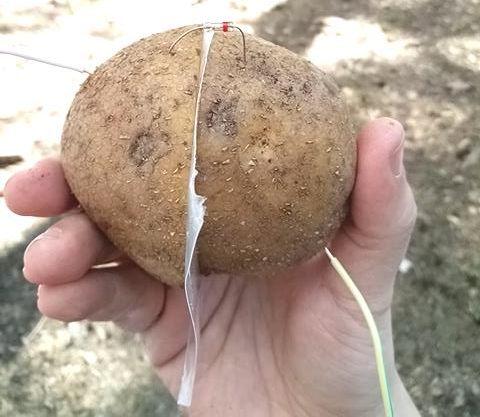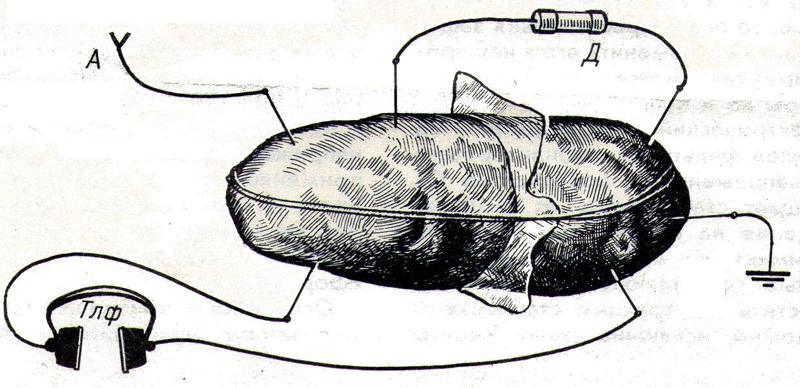Radio from ... potatoes

Happy Radio! In connection with the holiday, I would like to share instructions on how to make a curious, but quite working, detector radio receiver - based on potatoes.
About detector receivers
The detector receiver is the simplest type of receiver that does not use amplifying elements and does not require power, because uses the energy of radio waves.
The detector receiver consists of an oscillating circuit (coil and a variable capacitor) to which the antenna and ground are connected, a diode and a high-impedance earphone. Wikipedia layout:

Because of their shortcomings (which we will talk about later), detector receivers left the stage back in the 50s, and now they are assembled by novice radio amateurs just for fun.
Potato radio
The idea itself is not new, and a scan from the old Soviet book is walking around the network:
')

So,
- A large “good” (without defects) potato is taken and cut in half;
- Polyethylene is inserted between the halves;
- Earth and antenna are inserted in different halves, as well as high-impedance headphones contacts (2-4 kΩ). In the apartment, a heating pipe will be suitable for grounding if it is metallic;
- A germanium diode is inserted between the halves (I took a D9).
By such simple manipulations, a working radio receiver is obtained for long waves.
A few spoons of tar:
- We need not ordinary, but high-resistance headphones - for example, the Ton-2M. There is a suspicion that they can be replaced by piezo dynamics (namely a speaker, without a generator). Or you can connect the potato to the line input of the sound card. In addition, I saw on sale headphones from the designer of detector receivers on ebay;
- Need a good antenna at high altitude;
- Need good grounding;
- There are not too many radio stations left in the range that our receiver is able to receive, and in large cities there is too much interference, so that the experiment will only work in a country house far from the city.
And in the end, as was to be expected, I was able to catch only noise at the potato receiver, near Moscow. After that I tried the usual radio receiver, and I also heard only noise on the DV :( Therefore, in order to check the concept somehow, I took the Raspberry Pi and made a small AM transmitter using rpitx . True, the quality, of course, terrible - but it works!
Source: https://habr.com/ru/post/403707/
All Articles